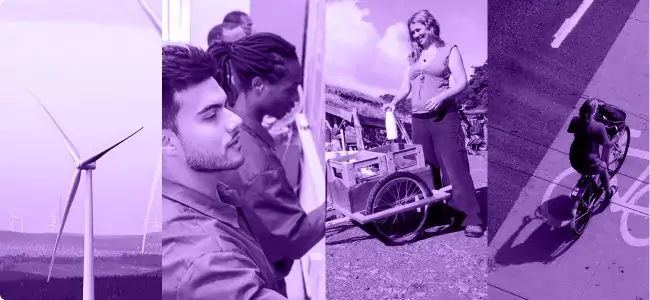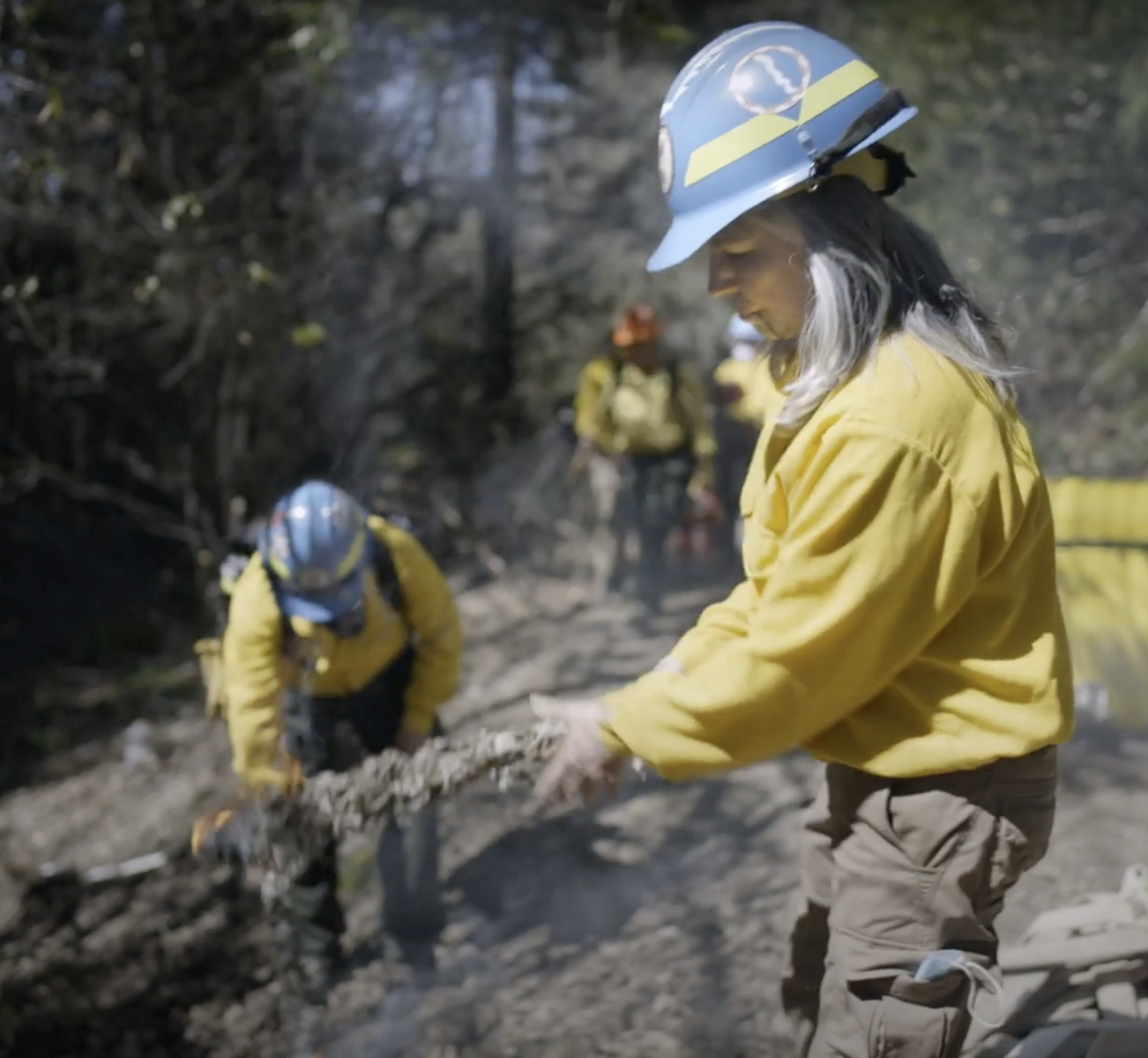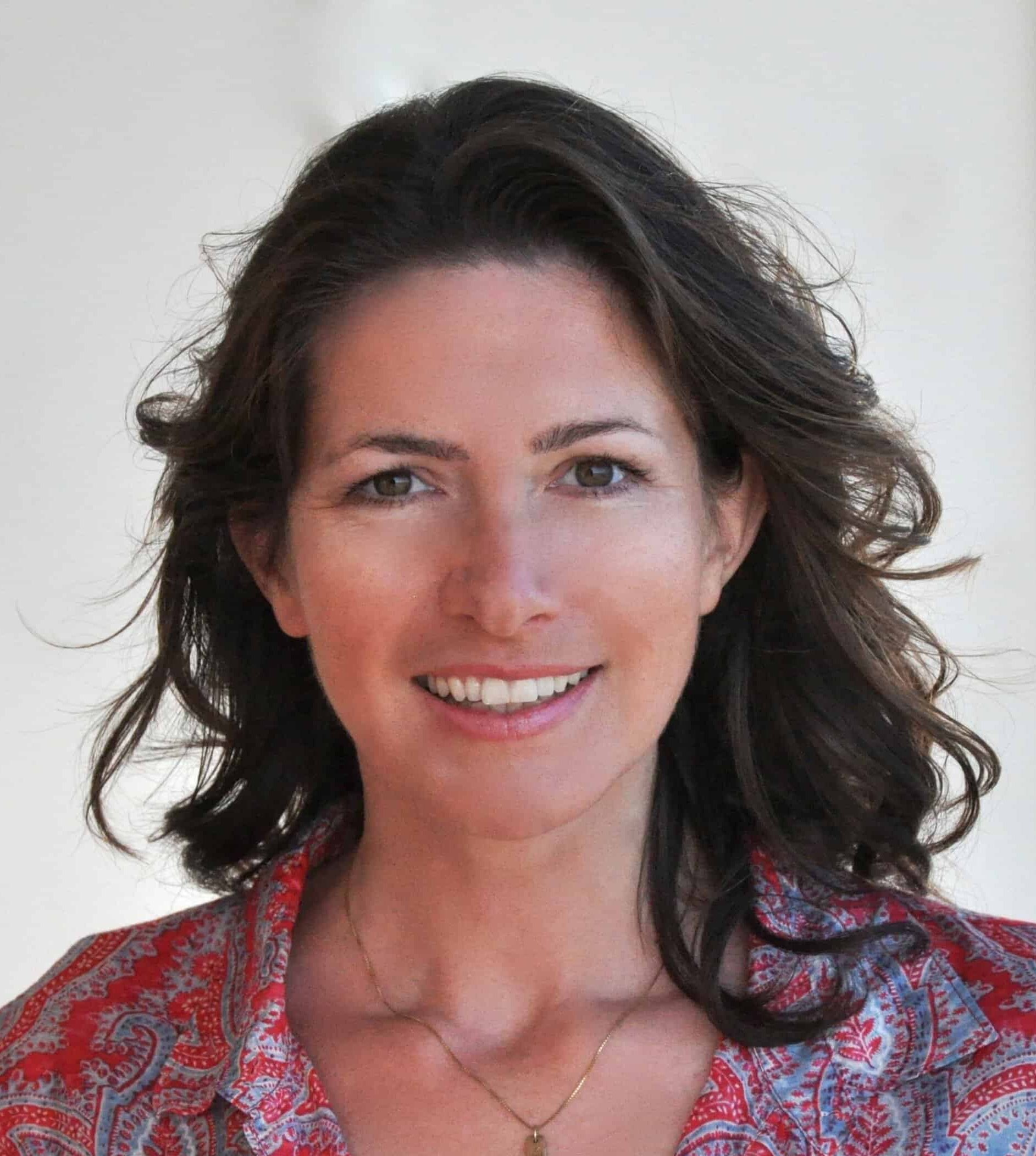

Living Paradigms is a series about what we can learn from the customs and cultural practices of others when it comes to solving problems. It is sponsored by Wonderstruck.
Maidu fire practitioner Danny Manning twirls a traditional fire stick made from an elderberry plant between his hands, rubbing it against a fire board until the first ember forms. He kindles it with a cottonwood bundle and gently blows on it until it turns into a flame. “That’s how you start a fire,” tribal matriarch Diana Almendariz exclaims with a satisfied grin. “No lighter, no nothing.”
The Yocha Dehe Wintun Nation has recently revived its tradition of cultural burns. Every fall, the tribe holds Leok Po days, which means “good fire,” on Yocha Dehe tribal lands in the Cache Creek Nature Preserve in Northern California. “Good fire” is also emblazoned on the bright green shirt Almendariz wears.
Melinda Adams, San Carlos Apache Tribe member and geography and atmospheric science professor at the University of Kansas, has come to help. She ties tule stalks into forearm-length bundles, preparing them as fire-carrying torches: “It’s significant,” she says, “because it’s one of the plants tribes use historically.” She calls these practices “indigenuity — Indigenous genius.”
A major reckoning is underway in California. In the early 1900s, fire suppression became the official policy in the United States, calling for the immediate extinction of all land fires. Any intentional wildfires were strictly forbidden, including the traditional cultural burns Indigenous people had used for millennia to steward landscapes and harvest basket-weaving materials.
But the absence of fire has taken a toll: In the past several years, California has experienced the most destructive and traumatic fires in its history. In 2020, the state saw its first gigafire, which burned over a million acres. “Fire severity increased by 30 percent between the 1980s and 2010s,” says Jon Wang, professor at the University of Utah School of Biological Sciences, who uses satellite images to track the destruction of wildfires.

The fact that climate change drives warmer temperatures in drier forests is a major factor, but another factor is the absence of fire, which allows the buildup of biomass. “We have land that hasn’t seen fire in decades, if not centuries,” says Adams, who studies the ecological effects of controlled burns. “When you have that much buildup of overgrowth and brush, it’s a standing tinder box.”
For those who have witnessed several catastrophic and deadly wildfires in California firsthand, watching the crews ignite fires in the bone dry brush at Cache Creek can be unsettling. Though the Conservancy has announced the three burn days widely in local news and online, a neighbor calls the fire brigade. A Department of Forestry and Fire Protection (Cal Fire) officer stops Ron W. Goode, chairman of the North Fork Mono Tribe, to ask for permits. Goode always ensures the necessary permits are in place. In fact, not only is the burn properly permitted, but the Conservancy has received funding from Cal Fire for the Leok Po workshops.
The relationship with fire that Indigenous cultural burns reflect is a far cry from the American tradition of suppression. “We think about fire as spiritually rooted and culturally grounded,” Adams explains. “That’s different from how many in the West view fire — with fear, as something destructive.”
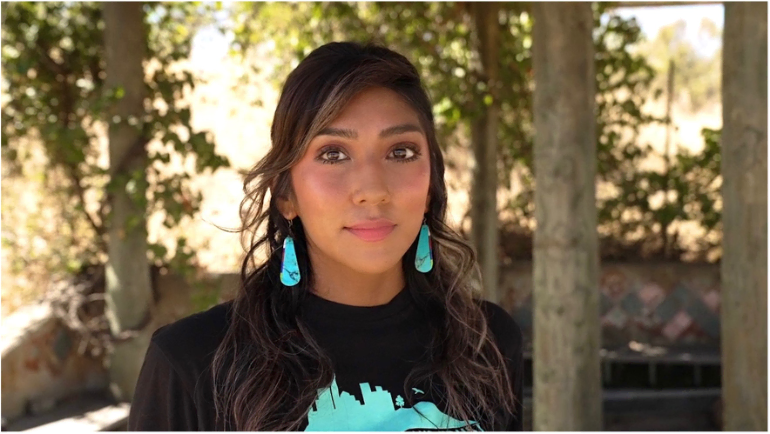
This fear, she argues, extends beyond fire. “People have an innate fear of us — when they see us, when they see us burning,” she says. “Historians and anthropologists wrote the narrative of the ‘vanishing Indian.’ We were supposed to be gone long ago. But we are here in 2025, reclaiming our languages, our cultural lifeways, our spiritual practices.”
Weighed down by negative news?
Our smart, bright, weekly newsletter is the uplift you’ve been looking for.She points to the long history of misunderstanding and demonizing Indigenous spiritual practices: “People feared us because they didn’t understand. When they see us leading with fire, their first reaction is, ‘They don’t know what they’re doing.’ But that’s not true. We don’t ‘control’ fire. We steward fire — in a reciprocal, responsible way.”
The science bears this out: A Stanford-led study showed that burns by the Karuk and Yurok tribes significantly contributed to maintaining forest health and biodiversity. “For millennia, forest ecosystems in California have been shaped by fire from both natural processes and Indigenous land management,” the study authors summarize.
Researchers acknowledge that prescribed fire is considerably more cost-effective than wildfire suppression, which can cost over $2 billion a year in the U.S. Yet after decades of wildfire suppression, both the fire management culture and funding for prescribed fires need to be rekindled. “Prescribed fire is one of the most important tools we have for restoring natural fire regimes and undoing the effects of a century of fire suppression,” said study author John Williams, a project scientist with the UC Davis Department of Environmental Science and Policy.
Recognizing this, California passed a bill in late 2021 that acknowledges cultural burning as a valuable contribution to fuel management, and Indigenous practitioners as qualified to conduct burns without Cal Fire burn bosses, signaling a significant shift in policy. Governor Gavin Newsom announced a goal of burning some 300,000 acres in 2025 in controlled burns, but this scope might not yet be achievable.

Whereas out-of-control wildfires burn at much higher temperatures that eradicate native plants and grasses and destroy the soil, the more moderate cultural burns can be applied selectively to eradicate overgrowth of invasive plants. Chairman Goode compares fire to electricity: “Electricity is a dangerous thing. You can get a severe shock from electricity and it can kill people, but it can also be put to wonderful uses.”
Prescribed fires and cultural burns are not the same. A cultural burn doesn’t start with lighting fire. “It starts with observing the land, asking what it needs, asking permission from all non-human relatives,” Adams explains. “Fire is a non-human relative.”
As Goode puts it, “You can’t have cultural burns without culture.” He has been practicing cultural burns for three decades and now passes on his knowledge to the next generation.
Cultural burns are not just about reducing wildfire risk. They serve many ecological purposes: rejuvenating native plants, promoting biodiversity and enhancing the health of streams. Some trees and plants even depend on fire — pine cones, for instance, release their seeds in response to heat.
“So this land needed fire,” Goode says and points to the new growth that appeared since the last fire. “You come back in February or March and you’re amazed about the flowers that come back.”
“Prescribed burns reduce fuel, but that’s all they do,” Goode says in a film about the fire. “They don’t restore, regenerate, rejuvenate.” Tribes might conduct cultural burns for different purposes, for instance, to rejuvenate native habitat, restore the health of trees, promote the growth of berries, or to harvest materials for basket weaving. For Almendariz, fire is also about revitalizing traditional crafts. She wants to regrow tule strong enough for basket weaving. Traditional basket weavers need fires to find the materials. Lois Conner Bohna, a North Fork Mono cultural educator and basket weaver, calls the cultural burns “a win-win situation for the plants and for us.”
“Fire keeps our environment clean, keeps the plants healthy, so they keep growing more materials for us to use, “Bohna explains. “As basket-weavers, we can’t go to a craft store and buy our basket materials, we need a full year cycle to gather our materials.”
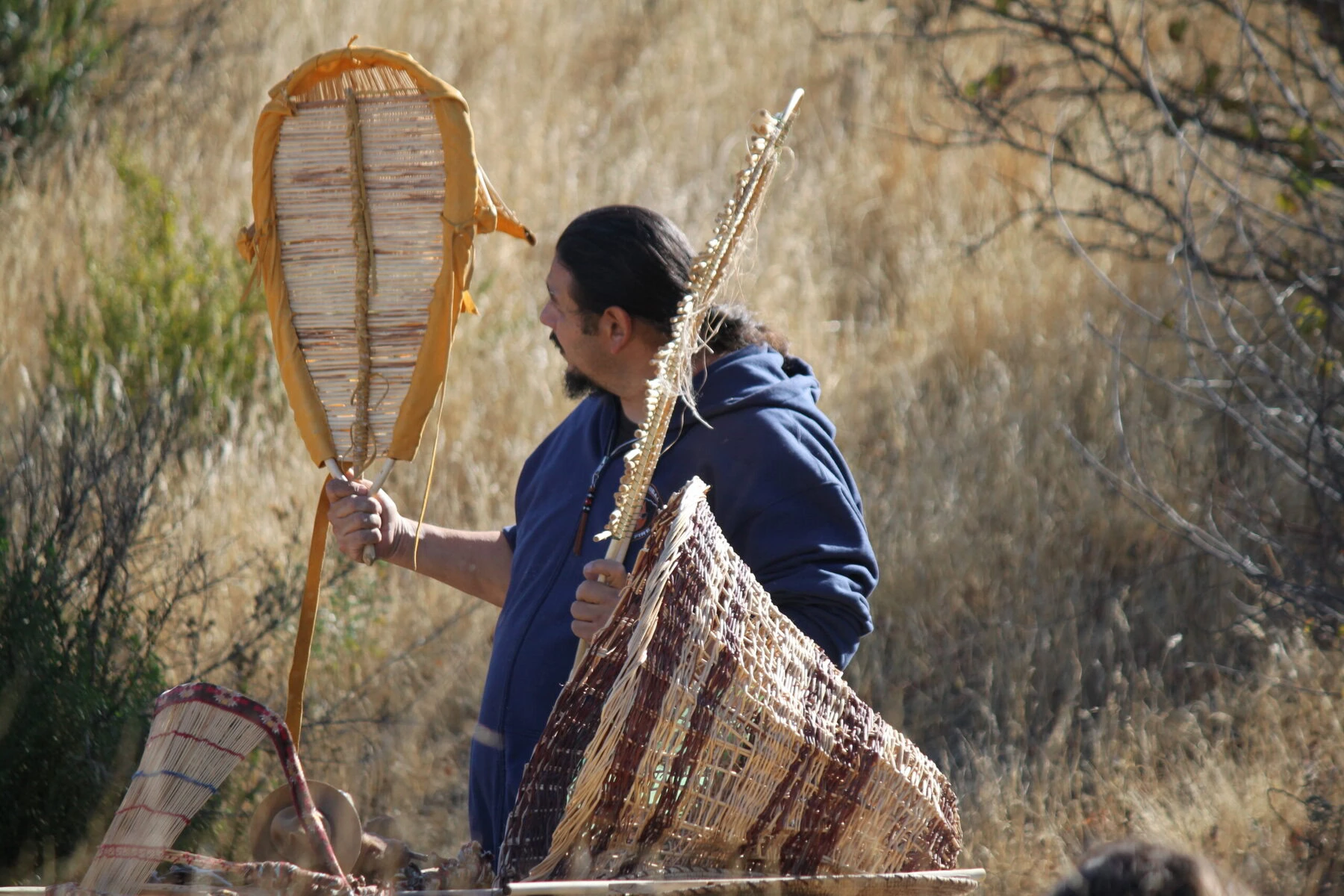
Another effect of tempered fire is the regrowth of native plants. Goode points to manzanita berries: “This is both food and medicine. Smoke helps the leaves and the berries to become a better product.”
While the first day of the Leok Po fire at Cache Creek is a Cultural Awareness Day for the public, the following two days are for several dozen fire professionals from Cal Fire and various local fire departments to receive training and practice “in the nearly lost skill of collaborating with fire, rather than trying to dominate it,” as the tribe announced.
Fire watchers carrying water bladders keep the flames contained to the intended acreage and plants, directing them to the area and plants the tribe wants to apply fire to. Manning, who lit the fire, is not only a cultural firekeeper but also a local firefighter — bridging the worlds of Indigenous tradition and modern fire management.
Melinda Adams has made it her mission to integrate Indigenous and Western fire science. As a cultural fire practitioner and a scholar, she researches fire’s effects on soil quality, ecological health and climate resilience. “The increased onset of gigafires means we’re not putting enough good fire on the ground,” Adams says. “Controlled burns make it less likely that the land is ravaged by high-severity, high-temperature fires.”
Adams grew up in a family of firefighters and also pursued conventional wildland fire certification through the National Wildfire Coordinating Group. “We have a common goal of trying to keep our forests clean, of trying to remove that fuel load, where wildfire could come through,” she acknowledges. She appreciates the federal fire training “telling us about optimal temperatures, humidity, air particulate measures, a very analytical way of thinking about atmosphere and temperature, but as Indigenous people, we read the landscape and we are attuned to more than human relatives that are passing through those areas.”
For her, reviving cultural burns is also a reclamation and cultural revitalization. Every cultural fire practitioner she knows works with Native youth. “Whether we document it or not, we all make sure these cultural lessons are passed on to the next generation,” she says. “For a long time, it wasn’t safe to be Native. But cultural fire is a way of returning to the landscapes we were once punished for stewarding. When we gather for a burn, we reclaim our place.”
Even non-Indigenous fire survivors come to cultural burns to find healing. Adams recalls survivors of some of California’s recent megafires attending a cultural burn. “They started out very fearful, but learned a different way to view fire,” she says, and particularly remembers one woman, an artist. “She painted a picture of her healing from fire, restoring her relationship with fire.”
For Goode, cultural burns are about coming to a place of understanding. “You have to understand fire,” he says. “You have to respect fire. You can’t be afraid of it. If you’re afraid of fire, you won’t understand fire.”
As Adams and others light the flames, they are not only managing fire — they are igniting a movement, restoring Indigenous sovereignty and redefining the future of land stewardship in California.
All scrolling images appear courtesy of Cache Creek Conservancy.

